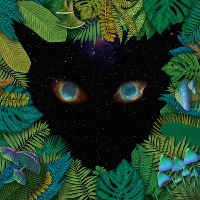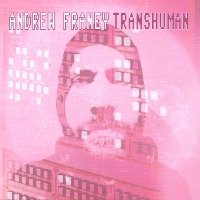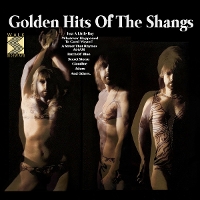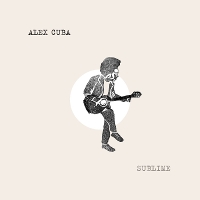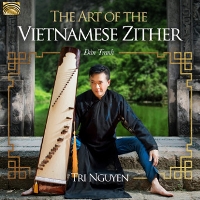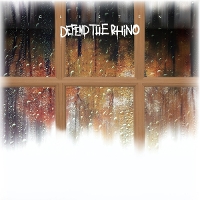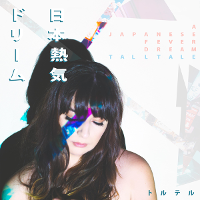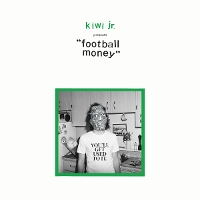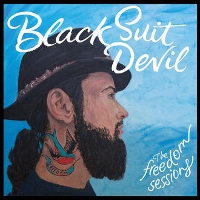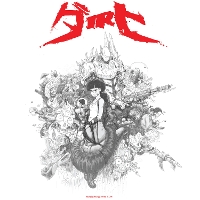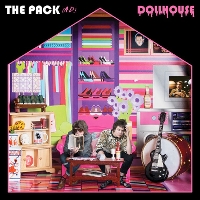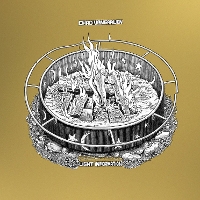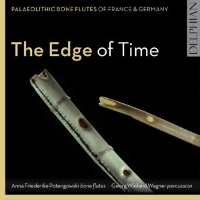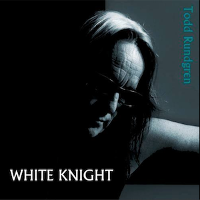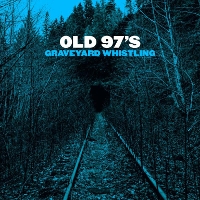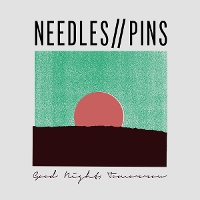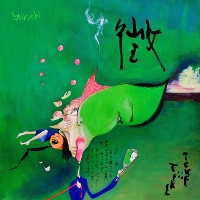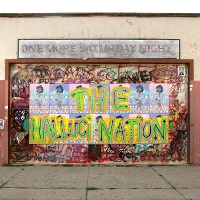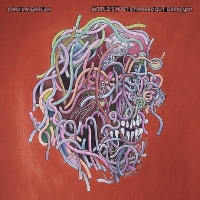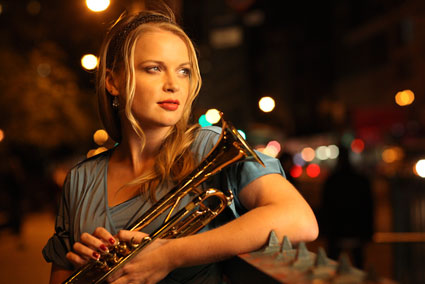
Bria Skonberg has been working hard to keep traditional jazz alive.
A Music Conceived in Joy : The Traditional Jazz Story in the 21st Century, A Jazz Notes Essay
Traditional jazz, which began in the New Orleans area, has had its ups and downs over the years. Now a few young Canadian musicians are happily singing its praises, teaching and spreading trad jazz all over North America to anyone who will listen. As it turns out, it's hip to be trad.
There are many sub-genres within jazz. Here, I’m going to focus on some early forms of jazz. Names such as traditional or trad jazz, Dixieland jazz, classic jazz, hot jazz and maybe even ragtime come to mind. For the purpose of this article I’ll refer to it all as traditional jazz.
Since the late 1990s I’ve been sporadically attending small traditional jazz festivals in Chilliwack and South Surrey, BC. Most people attending are in their senior years. They like to dance to the music (and are usually good at it) and really know the music. It appears that some of the better young musicians from the Vancouver jazz scene have traditional jazz repertoires in their musical portfolios and play in a number of bands known for this music. Chilliwack’s Bria Skonberg has moved on to New York, but she is working hard at keeping traditional jazz alive. I asked her what traditional jazz meant to her. “To me traditional jazz embodies the human spirit; at its best it's about spontaneous collaboration between people, fueled by mutual respect and made free by the individual mastery of one's own instrument. I feel really lucky to have been introduced to it when I was just learning how to improvise as it is the first building block for all other styles of jazz.”
Skonberg was part of a high school band program in Chilliwack, BC that produced many fine young musicians that love classic jazz and learned to play it well and she has gone on to teach annually at the Sacramento Traditional Jazz Camps. Skonberg has often credited her high school teachers for the success that she has obtained so far. She recently returned to BC to play at the Jazz Band Ball in South Surrey, reuniting with her band mates in The Big Bang Jazz Band and celebrating the band's 15th birthday. The band is now scattered throughout North America but most of them returned for the weekend. I asked her what it was like getting back to play music with all of her buddies. She answered, “It’s really fun. This band has always been about the ensemble. Individually we are all doing our own things, but when we get together we are just like a bunch of kids chucking dirt at each other in the sandbox, musically. It’s really special. At this point we have people who are living in Vancouver, Chilliwack, New York, New Orleans and we have a bass player from San Francisco. We played this festival—the same festival in this building in the year 2000.”
Last year she sat in with film director Woody Allen’s band. Skonberg observed, “In May I went to a place called the Carlyle Hotel, which is a rather ritzy place. I had a show coming up there and I wanted to check out the room and Woody Allen has a band that plays traditional jazz there every Monday night (Woody Allen regularly appears to jam with the Eddy Davis New Orleans Jazz Band). It’s like a hundred dollars a ticket and the room is just packed and I know lots of the guys in the band from playing traditional jazz in other areas so fortunately I know Eddy Davis the banjo player who directs the band and he invited me to come and sit in. So it was great. It was fun. Got a little chat, but we didn’t get much talking off the stage, because everybody wanted a piece of him and he’s not a very social person from what I understand. He kind of just zips in and out, so I kind of feel lucky to chat with him a little bit on stage; making music of course.” As to Woody Allen the clarinet player, “[He’s]all right. He’s kind of a George Lewis style, really old New Orleans—like that kind of music.
Skonberg seems to be on a one women mission to popularize traditional jazz in New York. She appeared with her band Bria Skonberg’s Hotter Than Sextet at the New York Hot Jazz Festival last summer and volunteers her time at the Louis Armstrong House Museum in Corona, Queens. She also makes frequent appearances with a variety of groups in some of the most important jazz venues in New York brandishing her trumpet and belting out notes with her personal style that includes traditional jazz influences. Her most recent CD So Is The Day combines traditional jazz and jazz/funk with traditional jazz influences. It includes tenor sax and clarinet player Victor Goynes, who is often heard with Wynton Marsalis’s septet and she also does a duet with John Pizzarelli.
As to Wynton Marsalis, that’s another story. Being a preservationist of any kind of music can get you in hot water Ask Marsalis. It seems that ‘he’s damned if he do and damned if he don’t.’ When he plays traditional jazz, critics complain that he’s not showing any originality or he acts like he invented it. When his works cross into the classical music field, he gets panned for leaving his acknowledged genre. He’s won a Pulitzer Prize and is the Director of Lincoln Center's jazz program and signed a large record deal at one point in his career. I believe that some of the critics are jealous and he’s an easy target. The Lincoln Center Jazz Band tours worldwide and they play plenty of traditional jazz. Marsalis is very knowledgeable on the subject, but critics complain that he has selective wisdom or plays favorites when talking about the history and traditions of jazz. Yes, maybe he pontificates at times, but he’s spent a lot of time studying jazz, so I think they should throw him some slack. At the end of the day, Marsalis does more good than bad in promoting traditional jazz. For example, getting rock legend Eric Clapton to record with him on Wynton Marsalis & Eric Clapton Play the Blues can only bring a larger audience to traditional jazz.
Back in Canada, Evan Arntzen, another member of The Big Bang Jazz Band is from the musical Arntzen family of Vancouver. It boasts a myriad of family members that are musicians and many are known for playing traditional jazz. While well known folk artist, Holly Arntzen, may be the exception, she recently joined the traditional jazz band Blackstick at the Jazz Band Ball for a set, and belted out some old classics with the boys. In the band was Arnt Artzen on banjo, guitar and vocals, his grandfather Lloyd Arntzen on clarinet and his brother Evan Arntzen (Holly is his aunt). I recently spoke with both Evan and Arnt, as they came to Kamloops with The Brothers Arntzen’s traditional jazz show and they were also teaching music to the students of the local school district. Evan explained how he got into music. “I was very lucky to be brought up in a musical family such as ours. I knew from a very young age that I wanted to be a musician, for better or for worse (laughs). But there was music around and we were very lucky to have parents and our grandfather teaching us music and it’s been a very important part of my life ever since.” I asked him what it was like to have all those other Arntzen’s on stage with him and he replied, “It was wonderful. Holly is such a dynamic, powerful force on stage. She’s a fine singer and she actually just moved into that area of Surrey and it just made sense for here to come and sit in with the band. It’s always wonderful, any time I get to play with my grandfather (Lloyd Arntzen). We’re both clarinet players. He’s the one who initially taught me how to play and gave me my first instrument. So any time I get to play with him it’s really grand."
I asked him how he would define traditional jazz and what does it mean to him. “It’s a tough one to define of course,” he answered, “but to me it’s classic jazz from the era in which jazz was popular. Jazz is another word that is hard to define. When I think of traditional jazz or hot jazz or classic jazz or any of these terms I think of music like Louis Armstrong; music that came out of New Orleans and was popularized all over the United States, Canada, Europe—all over the world actually. It’s music that people would dance to. Dancing being an important element and like Jelly Roll Morton said, ‘Music that was conceived in joy’.” I mentioned that traditional jazz seems to be a hard sell for younger audiences and when I went to these events I saw mostly seniors. Evan said, “It used to be a lot more popular than it is now. Now you just have everything. It’s kind of an amazing time for music. You know the proliferation of music on the Internet—it just means that anyone enjoying anything can create an audience for what they’re doing. It’s just every style and every band has its own style. There’s much more going on stylistically. There are many more bands, artists and musicians creating careers for themselves in very disparate styles. Jazz used to be a bit more in the mainstream in the 50s even. In the 60s there were jazz revivals. Traditional jazz like we were talking about, like Louis Armstrong and his Hot Five. You had bands like Turk Murphy in San Francisco and Humphrey Lyttelton, who was involved with the traditional jazz revival in Great Britain. You know, people who had been a part of that, would be more inclined to listen to that music now, as they are still alive and in their seventies and eighties. But the generational thing—I try to get beyond it as much as I can because I find that young people now days are very open to whatever kind of music that they are hearing, as long as it’s good. So when me and my brother (Arnt Arntzen) go out and play for swing dancers aged fifteen to thirty—they go absolutely bananas. It’s great, you know because they are hearing good music. I think there is a thread, although it is a marginalized music style (traditional jazz) at this point, being that you don’t hear it in the top 40 radio stations. Jazz still does have an audience that has continued through the ages, so it doesn’t seem to be going anywhere. I just played with a trumpet player, Jeff Gallante, at a festival in Roswell, NM. He’s from the east coast of the US and he’s playing great jazz. At thirteen he’s and incredibly mature musician. When you get people like that and you see the young people out there listening to the music and enjoying it, it gives you hope for the future of jazz, for sure.”
Evan is involved in many other projects including the contemporary jazz band, The October Trio. I asked him if his traditional jazz background comes through when he was playing contemporary jazz.
He replied, “I would hope so. As you say I end up in a lot of different music styles. Working as I musician as I do, I find I end up wearing a lot of different hats and it’s something that I enjoy doing as well as I enjoy listening to a lot of different styles of music. But another aspect of being a jazz musician is that to be the type of musician I want to be is to try to come up with a voice—a personality in music that is recognizable. So that’s another thread I bring along with me no matter what style I’m playing. It certainly would incorporate a goodly amount of traditional jazz music as that was the first music that I learned and something that I still carry with me.” Evan’s brother Arnt Arntzen is also heavily involved in traditional jazz and I got to speak to him after a recent Brothers Arntzen performance.
I asked about traditional jazz and how he got into it? Arnt answered, “My grandfather; those two words, my grandfather. He started me off playing guitar when I was pretty young, at about eight years old. He started me playing the blues; like “Canal Street Blues” and other older Dixieland blues. And then, I went away from it for a little while for some reason I thought music wasn’t cool. How wrong was I? Then I went back to it when I started getting into Johnny Cash. Once I started playing more guitar, my grandfather got me playing with his band. He’s got a band in Vancouver called The Red Onion Rhythm Kings. They play mostly at veteran halls and places like that. So he had me playing with them and my dad started hiring me and my brother and it just kind of snowballed from there. I play Dixieland banjo specifically because my grandfather bought it for me and he wanted a banjo player for his band. He bought it for me and said, “Here, learn how to play this thing and by the way you’re performing with it tonight.” I asked him about the banjo and pointed out that even before the 1920s it was a big instrument in traditional jazz. In contemporary jazz, the banjo has nearly disappeared and why he thought that was? Arnt answered, “I think it was because, two words: electric guitars. I think banjos became popular in the first place because, and this is just a theory of mine, horn players were terrible at keeping time as a rhythm section. They needed another instrument to plunk out the chords really loudly and help keep the beat. And so, banjos were the loudest stringed instrument around at that time. It’s simply loud. It’s basically a drum with strings attached. So that’s why they did it.
"There’s an old story that a friend told me and I don’t know if he’s pulling my leg or what, but apparently what guitar players used to do—when they started playing with a horn section the horns would drown them out. A guitar isn’t that loud when you don’t amplify it. What they would do is chop the neck of the guitar off of the guitar body. They would find an old snare drum that wasn’t wanted anymore and bolt the neck of the guitar to the snare drum and they’d make a banjo that way. It’s entirely feasible that that’s how the first banjo players came around like Johnny St. Cyr, who played with Louis Armstrong. He played a six string banjo tuned like a guitar, ‘guitanjo’ or whatever you want to call it. But I think that’s where that comes out. Why it isn’t popular now—I guess people know electric guitar more and relate to electric guitar a little more. Banjo is a lot more percussive and a lot more of a rhythmic instrument and not as much a melodic one. When people see a banjo they naturally think the theme from Deliverance.”
I asked him his take on mostly older people attending traditional jazz concerts. He suggested that traditional jazz may be on the rise, “Is it going to re-invent itself for young people? I think it has already. You’re kind of looking at it. Evan (Arntzen) is just on the verge of turning 30. Hudge (Jennifer Hodge) is in her late 20s, I’m in my late 20s, now. There are also a lot of younger people who are into it and are discovering this music all the time. They just started doing camps for young people down in Surrey. Jazz From the Start and there’s a lot of promising young talent happening there. As well, the Sacramento Traditional Jazz Camp they run down in California. They regularly get great talent from all over the continent (including Bria Skonberg). There has been a tradition among older jazz musicians to always indoctrinate the young while they can get them (laughs). And as a result, you know my grandfather is one of the people that subscribe to that. He taught Evan what he knew. Other players taught people, like Bonnie Northgraves, who’s a little bit younger than us. She’s a great trumpet player and Bria Skonberg, as well. [Historically] also under the tutelage of English Dixieland players, they came from England but settled around here, as well as other people like that; the late Lance Harrison, definitely.”
Jennifer Hodge aka Hudge Hudgins, is a Vancouver based bassist and sometime vocalist, involved in a variety of musical projects that often include traditional jazz. She plays with a swing, vocal outfit called Company B, that may not fit the bill, but often gets invited to traditional jazz festivals. Her Jen Hodge’s All Stars have an ever changing line-up and appear weekly at Guilt & Co. in Gastown (Vancouver).
Another of her projects is the all women Mighty Aphrodite Jazz Band; a group that is known to play plenty of traditional jazz. Hodge was also in Kamloops, BC, where she was teaching music and gigging with the Brothers Arntzen. I suggested to her (tongue in cheek) that the Arntzen brothers were into traditional music because they were forced to be and wanted to know what her excuse was. She laughed and said, “I was drawn to it when I went to college (Capilano College in North Vancouver) and I met other people. Evan (Arntzen) and I were in the same year and his friend Bria Skonberg was a year ahead of us. Evan and Bria were in a group called The 51st Eight. They did that outside of school. I went to check it out and eventually was asked to sub and later to join the band. It’s just so fun. It’s a lot of fun but it’s also challenging. I think that people who are musicians or are musically trained in any way can appreciate it at an aesthetic level and people who aren’t can appreciate that you have to be very skilled to do it well, even though it just sounds fun.” Keeping the tradition alive, Hodge and Evan Arntzen recorded “Chinatown, My Chinatown” on a 100 year old machine last fall. This gives the recording that nostalgic feel of records from that time.
Between the band camps, school district seminars and constant gigging by these young musicians, maybe there is a future for traditional jazz. It seems to be carving out a niche in the cluttered music world of the 21st century. If the enthusiasm and dedication of the Arntzen family, Bria Skonberg and Jen Hodge counts for anything you can expect to hear traditional jazz being played and taught for some time to come.
Maybe the last word should come from a musician living in New Orleans. John Doheny is a former resident of Canada. He has taught at Tulane University in New Orleans and has toured with The Temptations and Solomon Burke and is part of the jazz band, The Professors of Pleasure. He is a jazz historian and author. He has also composed music for film and television. Doheny tells us, “Traditional jazz in New Orleans has undergone a series of "revivals" since WWII. Some of these have been fuelled by foreigners, as in the influx of British, European and Japanese players in the fifties and sixties. Some have been homegrown, like the "brass band" revival instigated by guitarist Danny Barker's Fairview Baptist Church youth bands, which begat the early "new school" brass bands like the Hurricaine, Dirty Dozen, and Rebirth brass bands. Most recently, a post-Katrina influx of young, mostly white players from around the country and around the world has served to keep the trad scene healthy.
The principle difference between the local and imported musicians recently though would seem to be that while the latter focus on trad jazz exclusively, native New Orleanian musicians tend to be more broad-based stylistically. The graduates of Danny Barkers Fairview band include modernists like Herlin Riley (long-time Wynton Marsalis drummer) and Leroy Jones and Lucien Barbarin (trumpet and trombone with Harry Connick Jr.s big band). The demands of making a living in New Orleans playing music have long included the necessity of covering a lot of musical ground, and I believe the local players reflect this somewhat more than the imports.
I'd highly recommend Don Suhor's excellent book "Jazz In New Orleans: The Postwar Period Through 1970" for an overview of the city during those years, as well as Thomas Jacobsen's "Traditional New Orleans Jazz and the Men Who Make It" (which includes an excellent chapter on the late Vancouver saxophonist and clarinetist Brian Ogilvie) for a look at the contemporary scene.
New Orleans, I think, often comes as a bit of a surprise to those who come here expecting a cliched "dixieland" sort of scene. The music here is, for want of a better word, "funkier" than that. And hipper.
Jim Dupuis is the host of Jazz Notes heard Wednesday from 5-7 PM PT at www.thex.ca which now includes a feature on traditional jazz.

